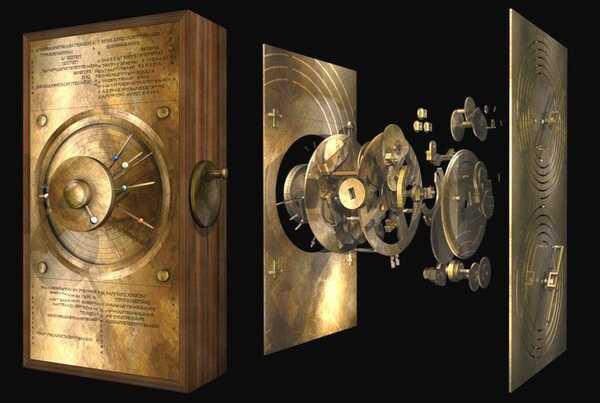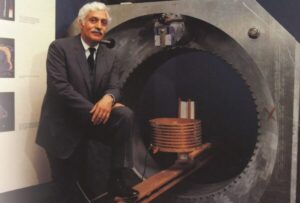The Astonishing Antikythera: The Forgotten History of the First Analog Computer is a fascinating topic that unveils the secrets of an ancient technological marvel. The Antikythera Mechanism, discovered in 1901, has captivated historians, archaeologists, and scientists ever since. This remarkable artifact, which dates back to the 2nd century BC, is an incredible feat of engineering and a testament to the advanced knowledge of ancient civilizations.
Table of Contents
The Antikythera Mechanism: Unveiling Ancient Technology
The Antikythera Mechanism, a remarkable artifact believed to be the first analog computer in history, has captured the fascination of scholars and historians for centuries. This ancient device, discovered in 1901, has brought to light the complexity and advanced technological knowledge of the ancient civilization that created it.
- Historical Context: The Antikythera Mechanism dates back to the 1st century BCE, during the height of the Hellenistic period in ancient Greece. This period was marked by an extraordinary advancement in various fields, including mathematics, astronomy, and engineering. The mechanism’s invention aligns with this period of scientific flourishing.
- Structure and Complexity: The structure of the Antikythera Mechanism, consisting of bronze gears and plates, showcases immense craftsmanship and precision. Its intricate design and sheer number of components reveal a level of engineering sophistication previously unknown for that era. The mechanism’s complexity suggests that the ancient Greeks possessed a deep understanding of mechanics and mathematical principles.
- Purpose and Functionality: The Antikythera Mechanism functioned as an analog computer, offering calculations and predictions related to astronomical events such as eclipses, planetary positions, and the phases of the moon. By manipulating the dials and gears, ancient astronomers were able to track celestial movements and accurately determine significant astronomical events.
This ancient technology not only astounds us with its intricacies but also provides a window into the scientific capabilities of ancient civilizations. The Antikythera Mechanism demonstrates how these advanced technologies were utilized for complex calculations and astronomical observations. By unveiling the historical context, discussing its structure and complexity, and exploring its purpose and functionality, we can immerse ourselves in the world of this astonishing ancient device.
Rediscovery and Research Efforts
The rediscovery of the Antikythera Mechanism was a truly remarkable event. In 1901, a group of sponge divers stumbled upon the wreckage of an ancient ship near the Greek island of Antikythera. Little did they know that this chance discovery would unveil one of the most extraordinary ancient artifacts in history.
Upon further exploration of the shipwreck, archaeologists found a peculiar bronze device, which would later be identified as the Antikythera Mechanism. Its intricate design and complexity immediately baffled experts, as no other object of its kind had ever been encountered before.
Over the years, numerous researchers have dedicated their time and expertise to unravel the mysteries of this ancient analog computer. One of the most notable figures in this field is the late Derek de Solla Price, an American historian of science and technology. Through his meticulous study of the mechanism, Price provided valuable insights into its structure and functionality.
In order to comprehend the inner workings of the Antikythera Mechanism, modern technology has played a vital role. X-ray scanning, in particular, has been instrumental in deciphering the finely crafted gears and intricate mechanisms hidden within the device. These cutting-edge techniques have allowed researchers to gain a deeper understanding of the device’s capabilities and purpose.
The combination of historical research, archaeological expertise, and technological advancements has brought us closer to unlocking the secrets of the Antikythera Mechanism. With each new breakthrough, we are able to piece together the forgotten history of this extraordinary ancient analog computer.
Insights into Ancient Astronomy and Mathematics
The discovery of the Antikythera Mechanism has provided fascinating insights into the ancient understanding of celestial bodies and the level of expertise in mathematics during that time.
The Antikythera Mechanism is a complex device that showcases the ancient Greeks’ knowledge of astronomy. By studying this remarkable artifact, we can gain a deeper understanding of how they perceived and studied celestial bodies.
Embedded within the intricate design of the Antikythera Mechanism are various astronomical features. These include gears and dials representing the movements of the Sun, Moon, and five known planets at the time. The presence of these features suggests a sophisticated understanding of the heavens and their relationship with Earth.
Perhaps the most astonishing aspect of the Antikythera Mechanism is its ability to perform advanced mathematical calculations. By manipulating its gears and dials, ancient astronomers could predict astronomical events with astonishing accuracy. This device demonstrates the early understanding of trigonometry, as it utilized complex mathematical formulas to accurately predict lunar and solar eclipses, and calculate planetary alignments.
The Antikythera Mechanism’s intricate design and calculating capabilities reveal a depth of knowledge in the fields of astronomy and mathematics that was previously unknown. It attests to the brilliance of ancient Greek scientists and highlights their significant contributions to the advancement of human understanding.
This remarkable artifact ultimately emphasizes the enduring importance of astronomy and mathematics in unlocking the secrets of the universe. It inspires modern-day researchers to delve deeper into the study of ancient technology, providing a window into the intellectual achievements of our ancestors.
The Antikythera Mechanism’s legacy has forever changed our perception of ancient civilizations and their capabilities. It sheds light on a forgotten history and encourages us to appreciate the ingenuity and intellect of those who came before us. By preserving and studying these ancient artifacts, we can continue to unravel the mysteries of the past and gain valuable insights into our present.
Possible Origins and Influence
The Antikythera Mechanism has long fascinated historians and archaeologists, prompting numerous theories regarding its origin and creators. Some researchers speculate that it was designed and built by the ancient Greeks, specifically the residents of the Greek island of Rhodes, where advanced craftsmanship thrived during that era. Others propose that it may have been influenced by the ancient Babylonians or even the Egyptians, who were known for their astronomical studies.
Regardless of its origin, the Antikythera Mechanism undoubtedly had a significant influence on later technological developments. Its intricate design and mechanical complexity demonstrate the ancient Greeks’ profound understanding of mathematics and astronomy. This early analog computer laid the groundwork for future advancements in both fields, serving as a source of inspiration and knowledge for generations to come.
However, despite its groundbreaking nature, the Antikythera Mechanism seemed to fade away in history. One possible reason for this is the destruction caused by the eruption of Mount Vesuvius in 79 AD, which buried many ancient artifacts and knowledge under layers of volcanic ash. It is also possible that the decline of the Roman Empire and subsequent societal changes led to the loss of interest in such advanced technology.
Nevertheless, the legacy of the Antikythera Mechanism lives on, reminding us of the ingenuity of our ancient predecessors. Its discovery and subsequent research have provided invaluable insights into ancient civilizations’ understanding of celestial bodies and mathematical calculations. By studying this ancient artifact, we can better appreciate the immense knowledge and capabilities possessed by those who came before us.
In conclusion, the Antikythera Mechanism is not merely a forgotten relic but a testament to the brilliance and innovation of the ancient world. Its potential origins and influence continue to be subjects of speculation and further research. By delving deeper into the history of this remarkable device, we can gain a greater understanding of our shared human heritage and the astonishing achievements of our ancestors.
Legacy and Significance
The Antikythera Mechanism has had a profound impact on our understanding of ancient civilizations. This remarkable device has provided valuable insights into the technological advancements and intellectual capabilities of our ancestors. By unraveling its mysteries, we have gained a deeper appreciation for the archaeological, historical, and scientific significance it holds.
In the field of archaeology, the Antikythera Mechanism represents a truly extraordinary find. It offers a rare glimpse into the technological prowess of the ancient Greeks, showcasing their ability to construct intricate and sophisticated machinery. This artifact serves as a testament to their ingenuity and provides a tangible link to their world.
From a historical perspective, the Antikythera Mechanism has redefined our understanding of ancient technology. Its existence has challenged previous assumptions about the capabilities of ancient civilizations. It demonstrates that our ancestors possessed knowledge and skills that were far more advanced than previously believed. The mechanism’s design and complexity have prompted scientists to reassess the narrative of technological progress throughout history.
In the realm of science, the Antikythera Mechanism has enabled groundbreaking research into ancient astronomy and mathematics. By decoding its inner mechanisms and understanding its purpose, we have gained valuable insights into the celestial knowledge and mathematical calculations of the time. This device has provided a window into the minds of ancient astronomers and the methods they used to predict celestial events.
The preservation and study of ancient artifacts like the Antikythera Mechanism hold great importance. These artifacts not only allow us to uncover the past, but they also provide a foundation for future discoveries and advancements. By examining and analyzing these ancient technologies, we can expand our understanding of human history, scientific progress, and cultural evolution.
In conclusion, the legacy and significance of the Antikythera Mechanism cannot be overstated. It has revolutionized our understanding of ancient civilizations, shed light on their technological capabilities, and provided invaluable insights into our own scientific history. As we continue to explore and study ancient artifacts, it is essential that we recognize their value and prioritize their preservation. The Antikythera Mechanism serves as a reminder of the extraordinary achievements of those who came before us and motivates us to delve deeper into the rich history of ancient technology.
Conclusion
In conclusion, the Antikythera Mechanism remains an astonishing testament to the ingenuity of ancient civilizations. As the forgotten history of the first analog computer, it has captivated the minds of researchers and historians alike. The rediscovery of this extraordinary device has spurred a wave of research efforts, allowing us to unveil the secrets of ancient technology.
Through the use of modern technology such as X-ray scanning, notable researchers have made significant contributions to deciphering the inner mechanisms of the Antikythera Mechanism. This has provided us with invaluable insights into ancient astronomy and mathematics, shedding light on the ancient understanding of celestial bodies and demonstrating advanced mathematical calculations.
The origins of the Antikythera Mechanism and its purpose are still shrouded in mystery. However, the potential influence it may have had on later technological developments cannot be ignored. It is fascinating to speculate why such advanced technology seemingly faded away in history and what other ancient marvels may await discovery.
The legacy of the Antikythera Mechanism stretches far beyond its historical and archaeological value. It is a testament to human curiosity and the boundless capabilities of ancient civilizations. It serves as a reminder that there is much to learn from our past and that we should strive to preserve and study these ancient artifacts.
In conclusion, the Antikythera Mechanism is an extraordinary artifact that continues to inspire ongoing research and exploration. Its significance as the first analog computer cannot be overstated. Encouraging readers to delve deeper into the topic and explore the rich history of ancient technology is crucial to ensure that this remarkable piece of our collective history is properly appreciated and understood. The potential for future discoveries and the excitement surrounding the ongoing research fuel our curiosity and encourage us to continue unraveling the mysteries of the past.




